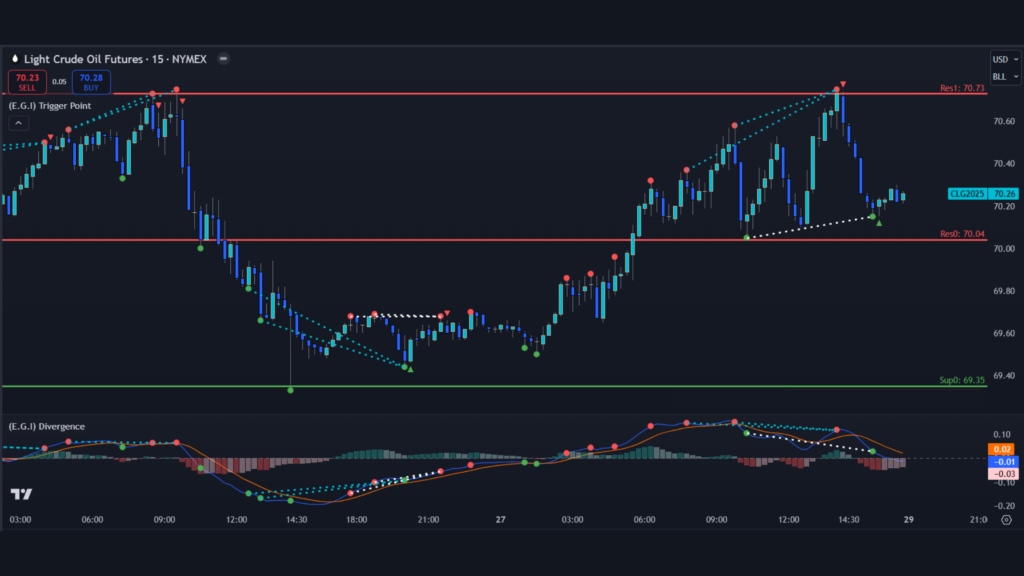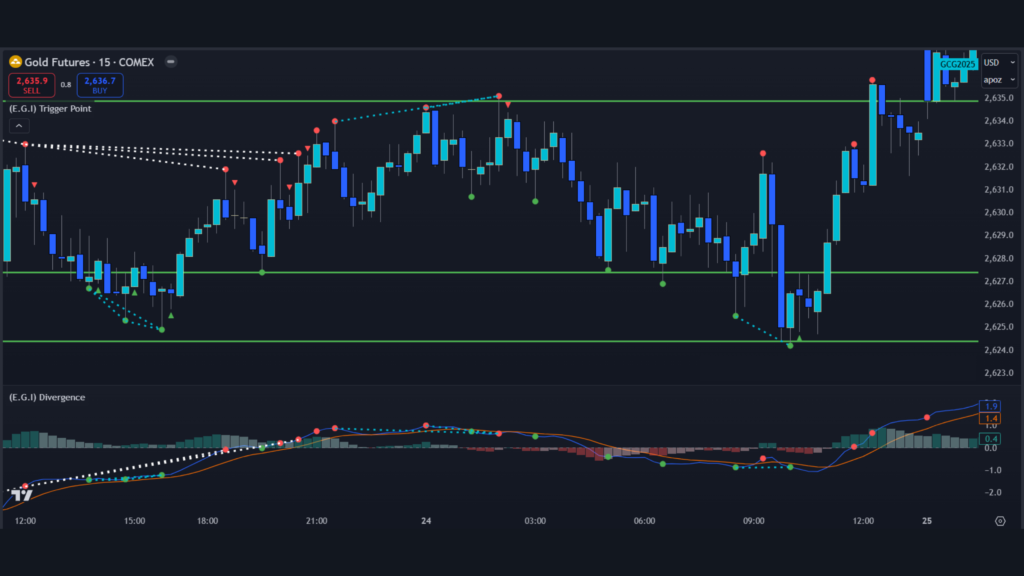E.G. Divergence
A custom-built indicator designed for NinjaTrader 8 and TradingView platforms. In technical analysis, divergence occurs when the price action of an asset moves in opposition to a key indicator, typically an oscillator like the RSI or MACD, or in contrast with other supporting data. This disconnect often signals a potential trend reversal or a shift in market momentum.
In simple terms, divergence means price and indicator are “disagreeing,” whereas confirmation occurs when both price and indicator support the same directional bias. Traders generally seek confirmation for higher-probability trade entries. For example, if the price is trending upward, a trader ideally wants their oscillator to show increasing strength, indicating the move has legs. But if momentum begins to fade while price continues to climb, divergence can act as a warning that the trend may be running out of steam.


A classic case would be plotting the Relative Strength Index (RSI) on a chart. If a stock continues to push to higher highs, but the RSI prints lower highs, that’s called bearish divergence, and it often precedes a market pullback or reversal. Conversely, if the price makes lower lows while the RSI begins to rise, this bullish divergence may signal that sellers are losing strength. Ultimately, divergence isn’t a standalone entry signal; it’s a way to assess the underlying strength of a move. Traders use it in conjunction with price action, volume analysis, or tools like the E.G. Trigger Point, to time entries and exits more precisely.
The E.G. Divergence is capable of analyzing over 10 technical indicators, like the Relative Strength Index (RSI), MACD, Williams R, and more.
Trading platforms: NinjaTrader 8 and TradingView.
Instruments: All.
Save 40%
$699 instead of $1,165

